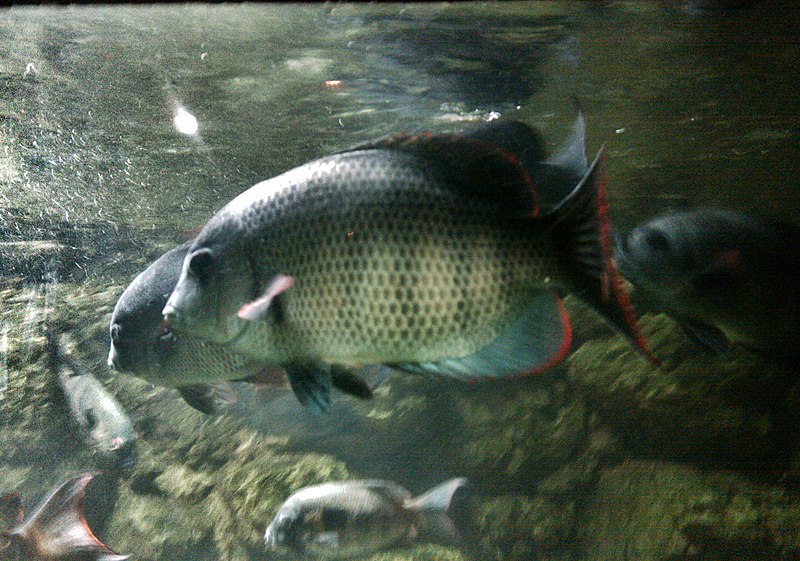 Hey cichlid fans! So, finally we come to the last installment in my series of top 10 cichlid lists. This time I will share my first 5 favorite Malagasy (Madagascar) species and uncommon or oddball cichlids, that can’t be missed. My main reason for keeping Malagasy cichlids is that they are all almost extinct with some species already gone, except from some public aquariums or breeders. It’s a matter of conservation at this point, and serious aquarists play a vital role in keeping these species around. As for the oddballs? Well, I just love species you don’t see everyday. So lets begin with the first five, I’ll follow in a few weeks with the final five.
Hey cichlid fans! So, finally we come to the last installment in my series of top 10 cichlid lists. This time I will share my first 5 favorite Malagasy (Madagascar) species and uncommon or oddball cichlids, that can’t be missed. My main reason for keeping Malagasy cichlids is that they are all almost extinct with some species already gone, except from some public aquariums or breeders. It’s a matter of conservation at this point, and serious aquarists play a vital role in keeping these species around. As for the oddballs? Well, I just love species you don’t see everyday. So lets begin with the first five, I’ll follow in a few weeks with the final five.
Paratilapia bleekeri/ polleni – These 2 species have caused a lot of confusion in the hobby. Both have different variants, but they share the same color black with pale spots. When I kept them, I differentiated between them by the bleekeri having large spots, while the polleni had very small ones. The color of the spots varied between white, light blue, green or yellow on either fish. Depending on the location where the fish was collected, some showed a greenish blaze down the forehead. They were great fish to keep with lots of attitude and personality and somewhat a challenging breeder, which added to their appeal for me.
 Paretroplus menarambo – Also called the Pin-stripe Damba, this high-bodied, light brown fish has horizontal rows of small dark spots along its flanks. Red margins outline the unpaired fins. These fish are hardy and adaptable. They can handle different kinds of water conditions, but sadly, this species is believed to be extinct in the wild due to habitat loss. It is a somewhat peaceful fish that is still kept in some public aqauriums and zoos.
Paretroplus menarambo – Also called the Pin-stripe Damba, this high-bodied, light brown fish has horizontal rows of small dark spots along its flanks. Red margins outline the unpaired fins. These fish are hardy and adaptable. They can handle different kinds of water conditions, but sadly, this species is believed to be extinct in the wild due to habitat loss. It is a somewhat peaceful fish that is still kept in some public aqauriums and zoos.
Paretroplus nourissati – Also called the Lamena, this 8 inch carnivore is a very tough and colorful species when breeding. The male takes on a bright orange coloration, while the female is more subdued. Once the fry become free swimming the colors are reversed! This species is extremely aggressive towards its own kind, so be careful if you are ever fortunate enough to keep them. It is an endangered species in the rivers of Madagascar due to loss of habitat.
 Paretroplus dambabe – This 12 inch species tends to be an aggressive fish, especially during breeding. It is best to house them in groups of 6 or more just like the tropheus of Lake Tanganyika. They also have a poor immunity to ich, so if you spot it hit them quick with an effective treatment, or they will be dead in a short amount of time. It is a great looking fish, being high-bodied with a greenish body color and red along the stomach. Also an endangered species.
Paretroplus dambabe – This 12 inch species tends to be an aggressive fish, especially during breeding. It is best to house them in groups of 6 or more just like the tropheus of Lake Tanganyika. They also have a poor immunity to ich, so if you spot it hit them quick with an effective treatment, or they will be dead in a short amount of time. It is a great looking fish, being high-bodied with a greenish body color and red along the stomach. Also an endangered species.
Paretroplus maromandia – Another species that somewhat resembles P. dambabe, juveniles have small red dots on the body that are replaced by a large more consolidated red area as they mature. They can grow to almost 15 inches! Unfortunately, this is also an endangered species.
Catch the fish blog in a few weeks for the final five oddball cichlids on my list!
Paretroplus menarambo image referenced from wikipedia and originally posted by Bjoertvedt
Paratilapia polleni image referenced from wikipedia and originally posted by MidgleyDJ
 That Fish Blog – Aquarium Advice and Information
That Fish Blog – Aquarium Advice and Information


